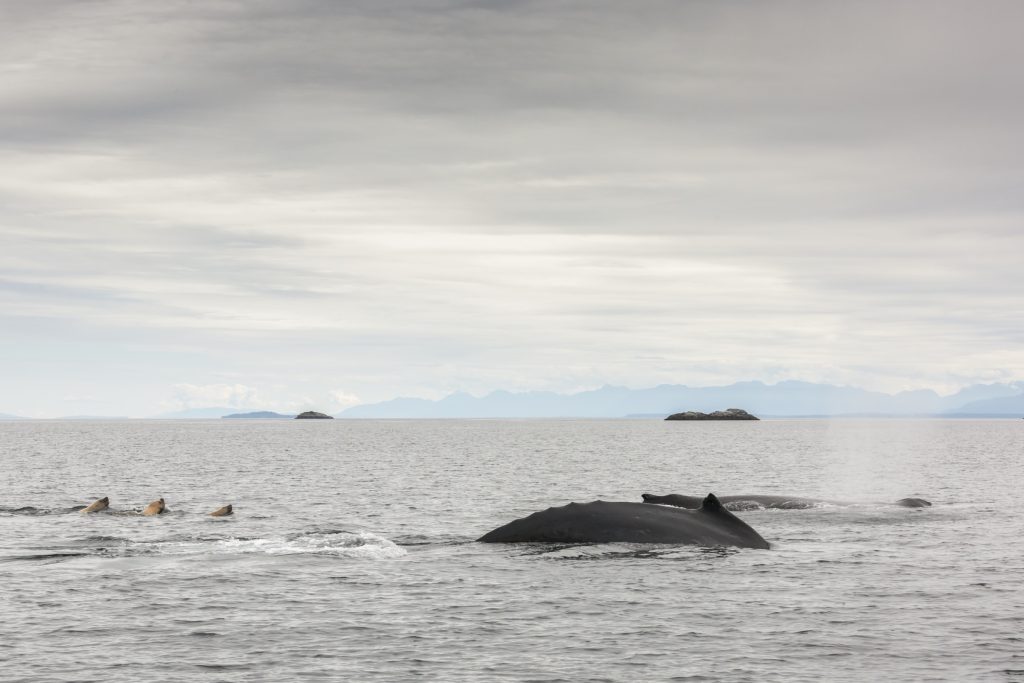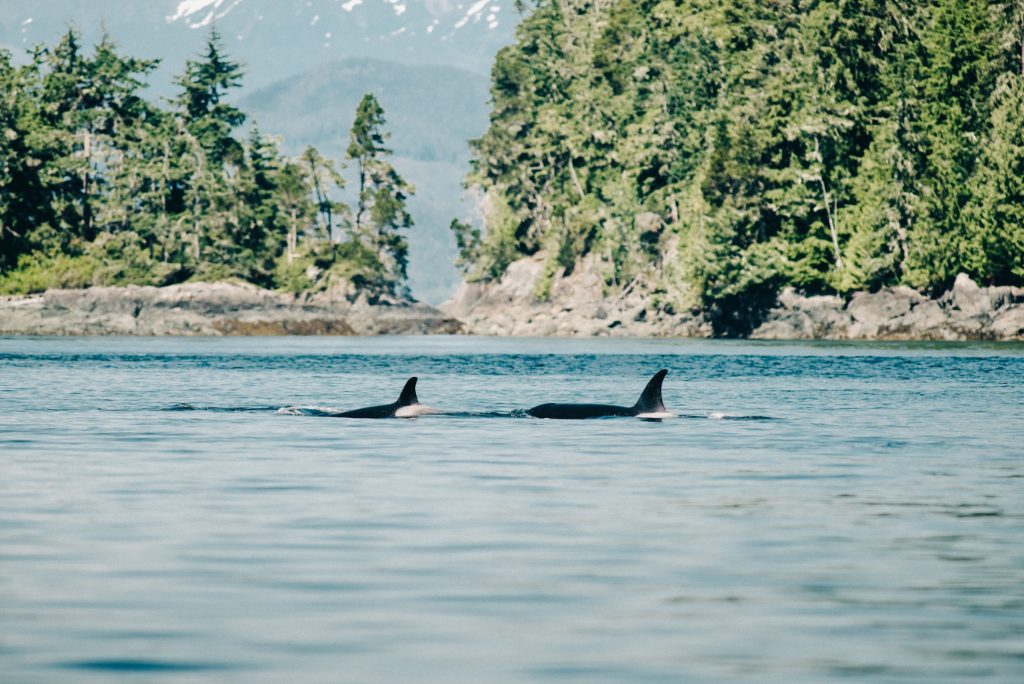
Vancouver Island North is an incredible destination for whale watching and sightings of other marine mammals. Our biodiverse coastal ecosystem, scattering of islands, quiet bays, and protection from the mighty Pacific Ocean draw marine mammals seeking shelter and food.
Responsible travellers are rewarded with the splash of a breaching humpback or the wonderment of a dorsal fin breaking the surface, knowing nature has its own rhythms and thrives best when given the space to live, move, and feed undisturbed. Increase your chance of seeing marine mammals by joining a well-informed local whale watching operator who relishes the opportunity to play their part in the preservation of the marine habitat and wildlife within it.
What marine species might I see in Vancouver Island North?
Just some of the magnificent marine species that frequent the waters of Vancouver Island North include several types of whales, orcas, harbour seals, sea lions, porpoises, and sea otters. Humpback whales breach and play in the currents near Telegraph Cove. Transient Orcas skillfully hunt along the rocky shores. The 34 pods that make up the Northern Resident Orcas seek a feast of salmon, particularly around late summer and early fall.
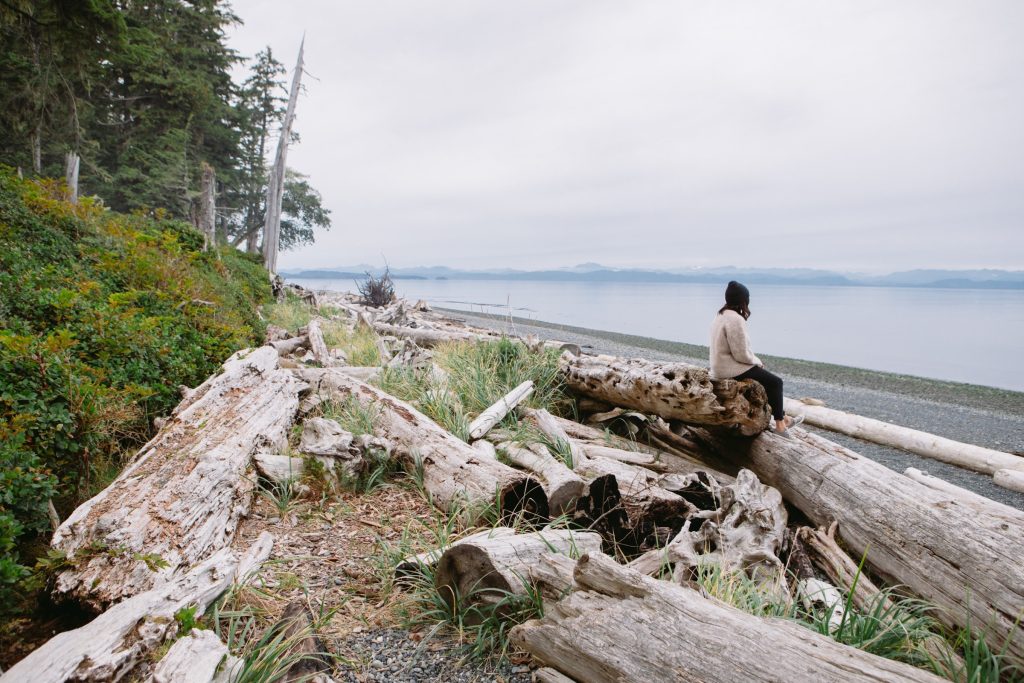
The phenomenon of “rubbing” on pebbly beaches is also seen by a lucky few who know to stay quiet and still on the beaches of Malcolm Island. Gray Whales have also been spotted in the waters around Port Hardy, Port McNeill, and the many inlets and islands of Vancouver Island North.
Marine Mammal Organizations Flourish around Vancouver Island North

With so much marine wildlife on our doorstep, it’s no wonder that Vancouver Island North is a hub for several organizations that passionately put the safety and preservation of marine mammals at the heart of their research, education initiatives, and actions.
The Marine Education and Research Society (MERS) is a charity led by three core concepts: research, education, and response. The latter speaks to their role as “primary responders” to marine mammals in distress, such as entanglement scenarios. MERS’ core public-facing educational projects revolve around sharing an understanding of legal distances and general boat-whale safety, plastic pollution, and the impact of noise pollution on marine mammals’ ability to navigate, hunt, and communicate over large distances.
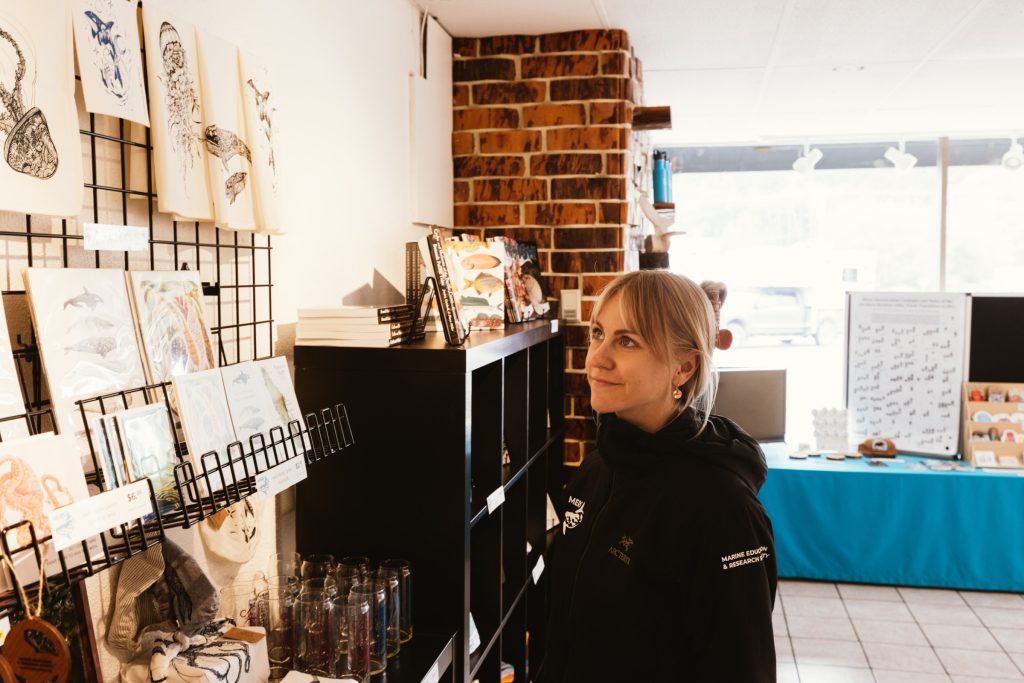
Meet and greet researchers and other volunteers at MERS’ brick-and-mortar location in Port McNeill. Feel the inspiration of gathering in community, lean into in-person learning, and pick up a piece of marine-inspired art and other ocean-infused souvenirs in their Ocean Store.
The North Island Marine Mammal Stewardship Association (NIMMSA) is a group of some 30 organizations and businesses with a mutual passion to balance the strength of a local economy with the health of the marine environment through stewardship practices and other actions. Members of NIMMSA include whale watching tours, land-based wildlife expeditions, sea kayaking operators, and non-profit organizations. If you engage in a tour or other eco-tourism adventure with one of their members, you’ll notice the inclusion of a small Conservation Fund fee. This fund is then invested in conservation initiatives, from fieldwork to policy development.
For the Whales—Operator and Recreational Safety
The “For the Whales” campaign—a collaboration between MERS and 4VI—came about in reaction to an increase in “close encounters” with whales. It’s an opportunity to engage operators and help them reinforce polices within their business and the local community that benefit marine mammals.
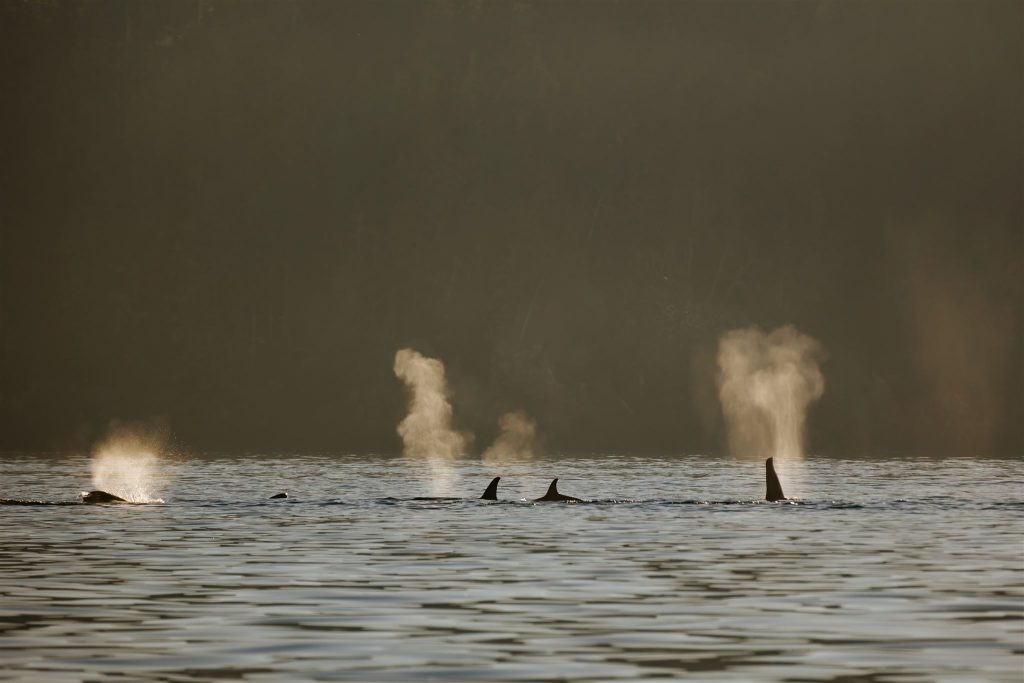
These policies focus on marine mammal viewing best practices. Both commercial and recreational boaters should be at least 200m away from orcas, as well as whales, dolphins, and porpoises with calves. In any other scenario, the minimum distance is 100m. Although it’s fantastic to stick to 200m whenever possible to minimize disturbance of habitat and behaviours.
When you’re out on the water, be alert for congregating birds, which can be a sign of fish and therefore whales feeding, and “floating logs” that can be sleeping whales. Look for the Whale Warning flag on other boats, and remember that if you “See a Blow, Go Slow”.
Responsible Whale Watching Tours and Adventures in Vancouver Island North
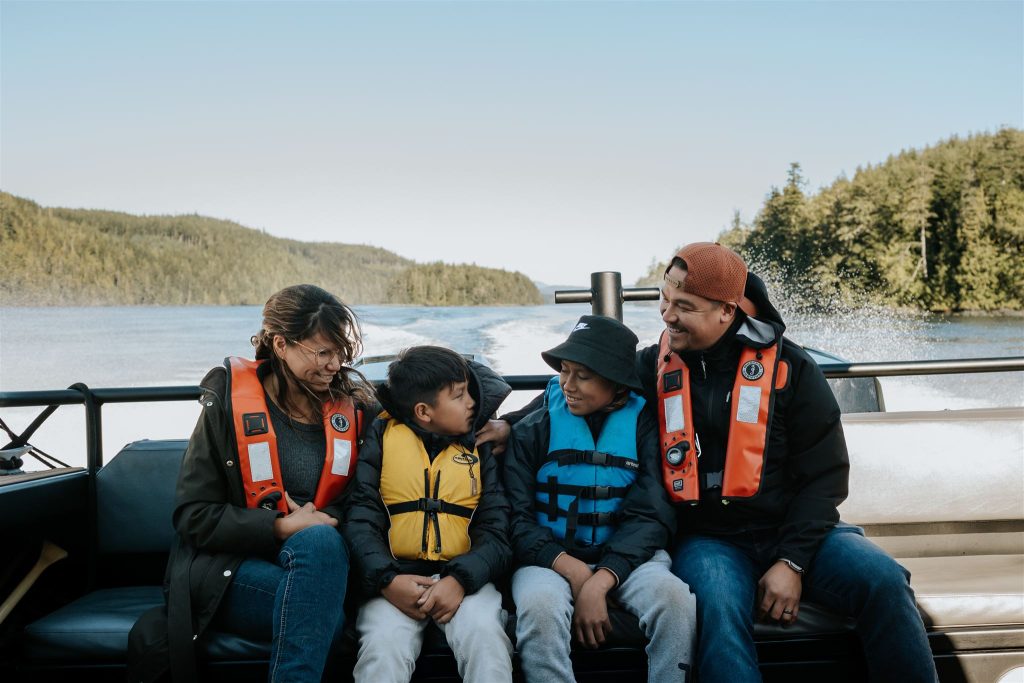
The best way to get out in an informed way is to tap into the expertise of local tour operators that abide by these best practices. Look for operators with a commitment to conservation, seek vessels that run quieter and minimize the use of fossil fuels, and see whether an operator is part of an ethical wildlife viewing organization. Consider sailing boats, small vessels, travelling by kayak, and even land-based wildlife encounters.
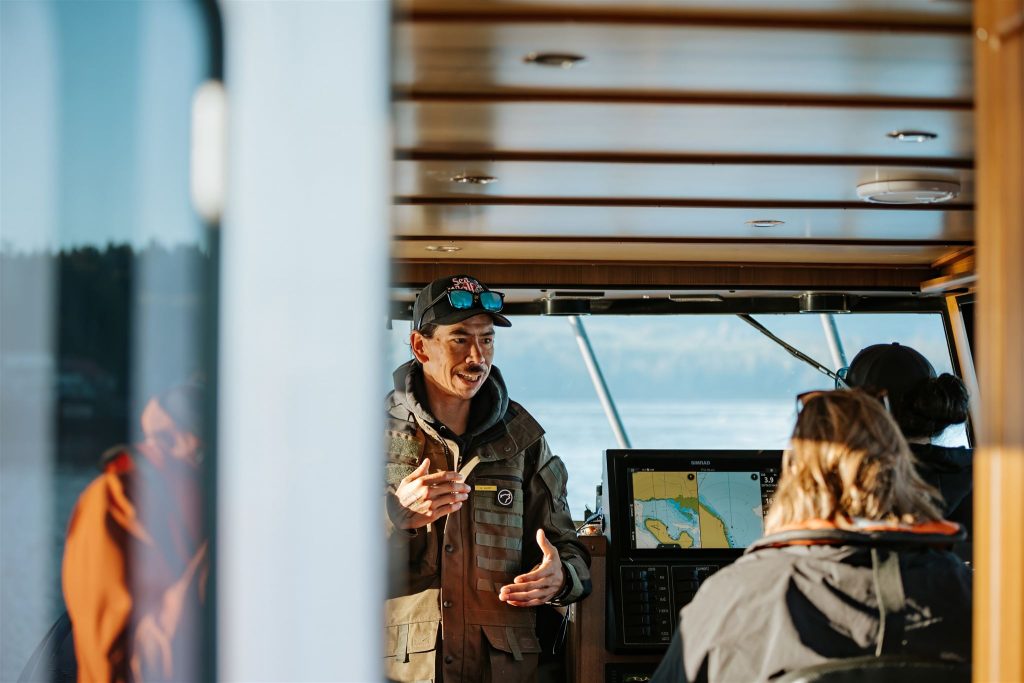
Let Reverence Guide The Digital Experience
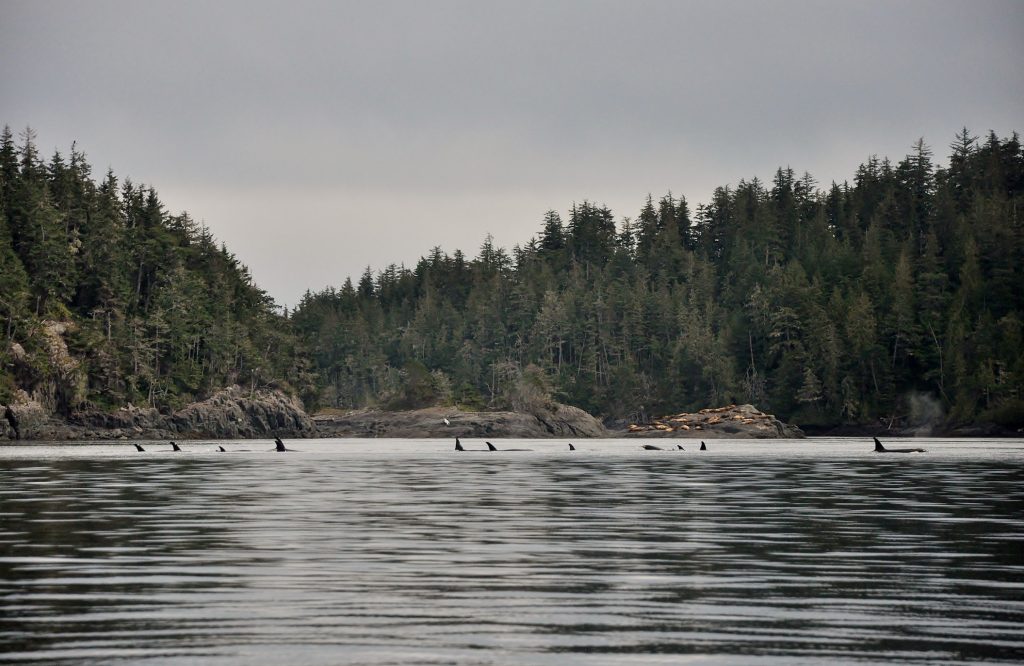
Once you’re off the boat, consider extending the role you play in whale advocacy to the sharing of your adventure. Even if you have a surprise close encounter, travellers shouldn’t share imagery of anything less than the legal marine mammal viewing distances on social media. Photographers are encouraged to share the details of using a zoom lens and cropping images when a whale appears close up. Consider focusing on the idea of “How Wild?” instead of “How Close?”; another initiative by MERS that highlights the impact of photography and the reverence we can co-create for seeing wild animals from a distance, undisturbed.
Take the North Island Wild Pledge, For the Good of our Wild.
The Wild Pledge is a promise to practice responsible tourism and journey with care when visiting Vancouver Island communities, businesses, Indigenous communities, forests and oceans.
